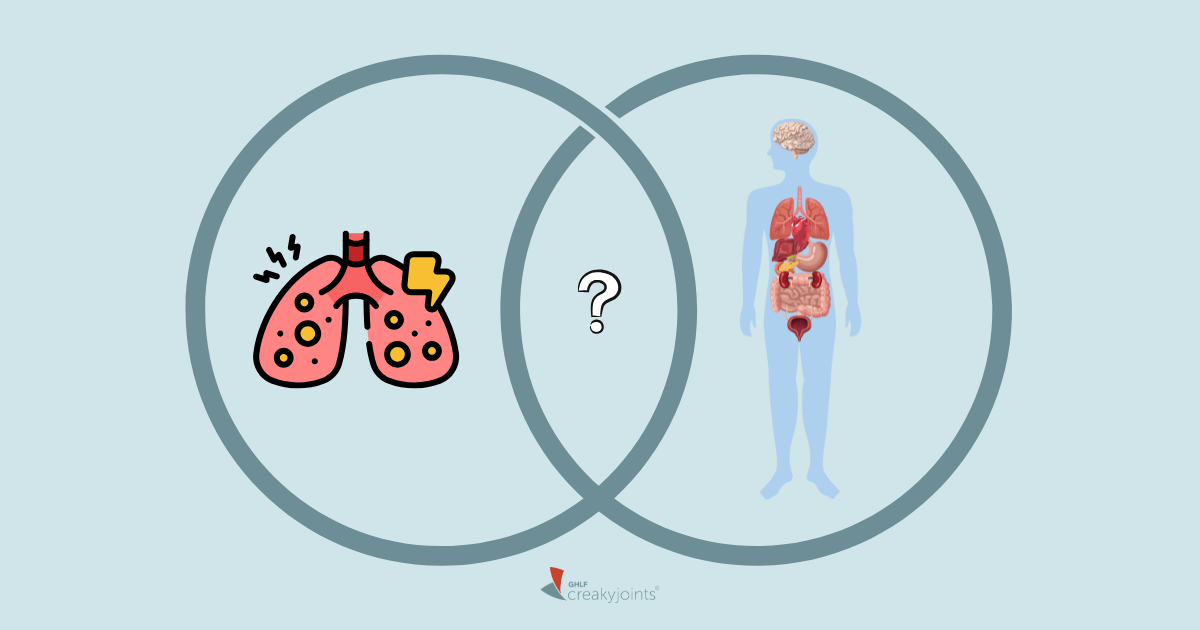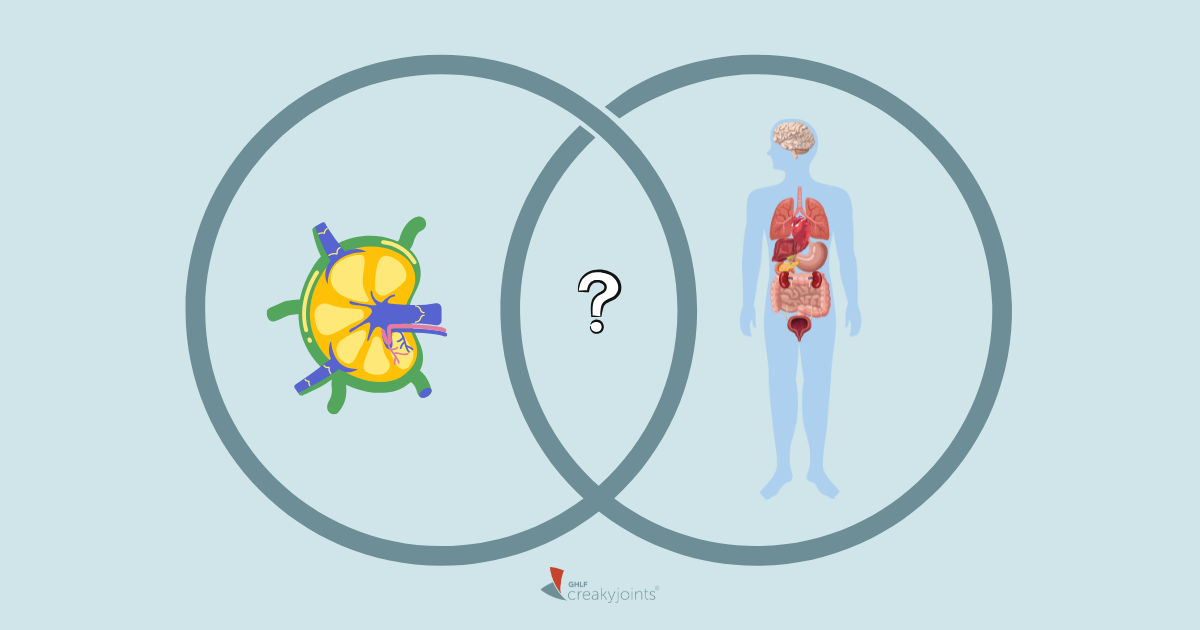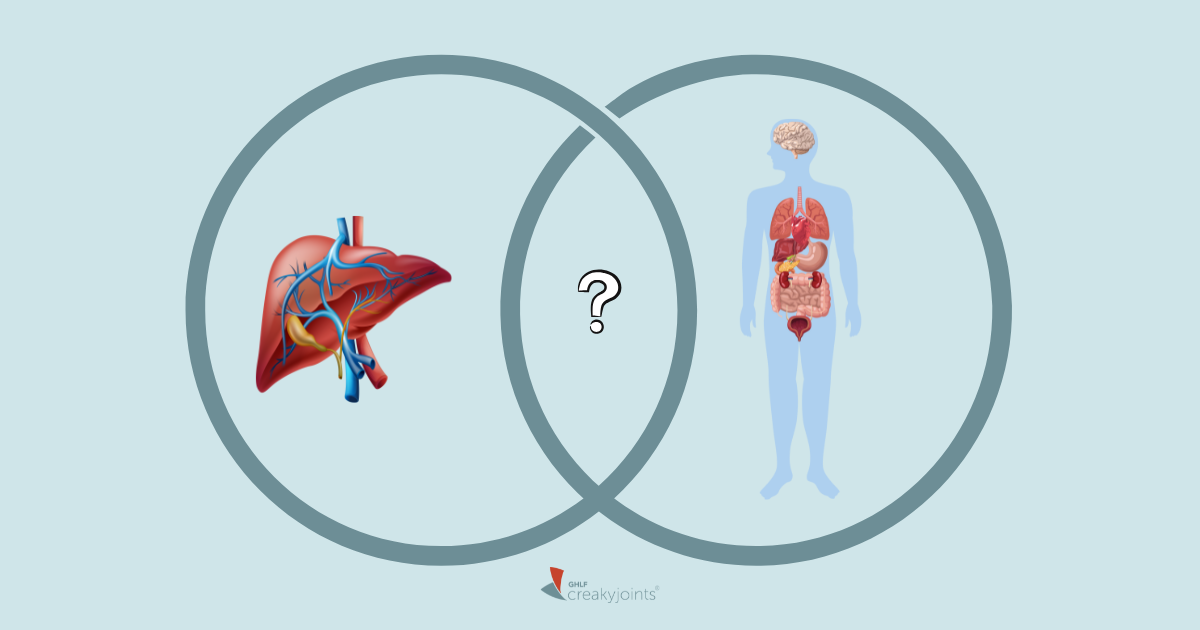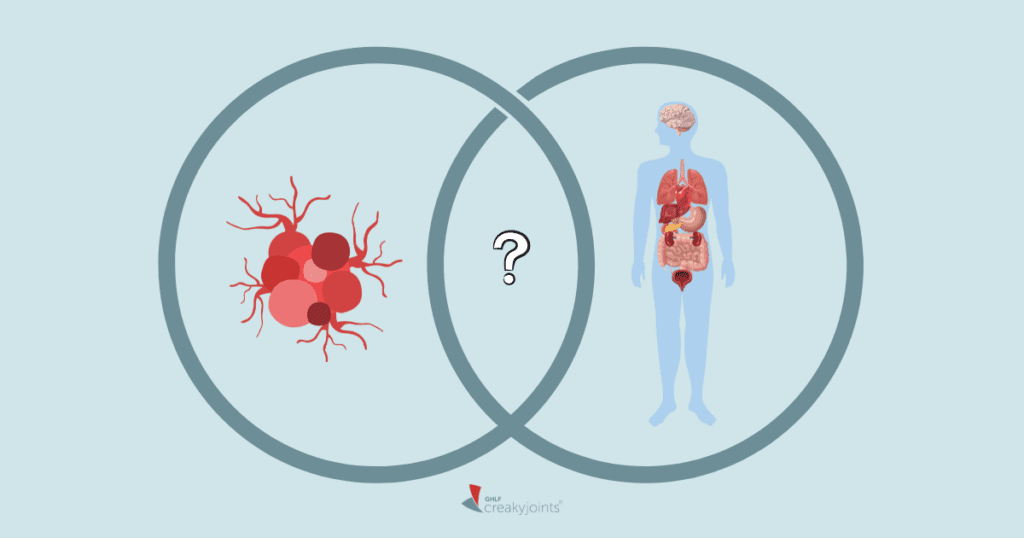

Imagine being told you have cancer — only to find out later you don’t. That’s the terrifying reality for some patients with immunoglobulin G4-related disease (IgG4-RD), a condition where the immune system attacks the body by mistake, causing swelling and inflammation in different organs. This can create tumor-like masses that might look like cancer but are not.
In April 2023, Kim Skelly, 37, suddenly developed sharp stomach pain and nausea after her nursing shift. A CT scan revealed a bowel blockage caused by a large mass and multiple small masses in her abdomen, pelvis, and ovaries. Doctors immediately suspected metastatic ovarian cancer. She was rushed into emergency surgery, where doctors removed a large mass and part of her small intestine. When she woke up, her surgeon delivered the grim news: “This was a lot worse than we thought. We definitely think this is cancer.”
But when the pathologist looked under the microscope, there was no cancer. Still, doctors weren’t convinced. A second biopsy also came back nonmalignant, revealing hardened tissue. After multiple tests and a tumor board review, Kim finally received the real diagnosis a month later: IgG4-related disease.
“Nobody could give us a sound answer as to whether or not it was 100 percent cancer,” recalls Kim. “The hard part was not letting myself spiral. My wife and I made the decision we were not going to consult ‘Dr. Google’ at any point in time because you can get down any rabbit hole based on any symptom, and it will eventually lead you to cancer or something terminal.”
Kim’s story is not unique — many undergo scary misdiagnosis and invasive treatments before getting a diagnosis of IgG4-RD. Understanding IgG4 can help you or a loved one avoid unnecessary procedures and get the care you actually need. This article will explain what IgG4-RD is, why it’s often mistaken for cancer, how doctors diagnose it, and how you can advocate for yourself to get the care you deserve.
What Is IgG4-RD?
Immunoglobulin G4-related disease (IgG4-RD) is an immune condition that causes inflammation and fibrosis, or scar tissue. Because IgG4-RD often manifests as mass-like growths in various organs such as the pancreas, salivary glands, and kidneys, it can often mimic and be misdiagnosed as cancer. This can lead to unnecessary treatments such as surgery or chemotherapy, which are not effective for this condition.
For many patients with IgG4-RD, the blood level of a certain type of antibody called IgG4 is higher than normal. In addition, a certain type of white blood cell called plasma cells that express IgG4 are increased in numbers in the tissue of the organ affected. Part of the evaluation doctors perform for diagnosing IgG4-RD includes a blood test for IgG4 and often a biopsy.
New treatments in development, and clinical trials are underway to find safer and more effective options for managing IgG4-RD. Steroids are the first-line option but long-term steroid use can cause side effects like weight gain, osteoporosis, high blood pressure, and diabetes, so doctors may use steroid-sparing medications like DMARDs or rituximab, a targeted anti-CD20 therapy, to suppress the immune system, ultimately reducing the size of the mass-like lesions.
How IgG4-RD Mimics Cancer
This disease creates hard lumps (lesions) in organs like the pancreas, lungs, and salivary glands. On scans, these masses can look just like tumors. Doctors often mistake them for cancers such as pancreatic cancer or lymphoma, as these can also cause swollen organs.
Dr. Matthew C. Baker, a rheumatologist and IgG4-RD expert at Stanford University, explains:
“It is ultimately a clinicopathologic diagnosis, meaning you take into account all of the clinical data, such as a patient’s history and exam, as well as laboratory, imaging, and pathology results.”
In one study, 60 percent of people with IgG4-RD were first misdiagnosed with cancer. Some even had unnecessary surgeries, like pancreas or kidney removal, before getting the right diagnosis. Dr. Baker recalls a case where a patient underwent a Whipple procedure —a complex, 10-hour surgery that involves removing the head of the pancreas and reconnecting multiple organs — only to later learn they never had cancer.
Diagnosing Cancer Vs. IgG4-Related Disease
Diagnosing a mass often starts with imaging tests like a CT or MRI scan. If cancer is suspected, doctors rely on a biopsy — removing a small piece of tissue to examine under a microscope. “The gold standard is to do a biopsy and pathology — to look under the microscope and see if the cells are cancerous,” says Dr. Pauline Funchain, an oncologist at Stanford University.
Sometimes when the pathologist looks under the microscope, there’s not enough tissue to determine if it is cancerous. “Where this gets tricky is with lymphoma,” she says. Lymphoma often requires a core biopsy, which uses a larger needle to collect a more comprehensive sample, allowing doctors to examine the structure of the cells. “Generally speaking, before you give someone treatment that can radically change their lives with side effects, we generally want to be as sure as possible.”
However, diagnosing IgG4-RD is more complex and requires the coordination of multiple medical specialties (for example, rheumatologists, gastroenterologists, and oncologists) depending on which organ(s) is affected. For some, getting to a diagnosis can take several months, while for others, it might take decades, countless consultations with specialists, imaging, blood tests, and scans, procedures, and surgeries.
Doctors use several key tests to confirm IgG4-RD and rule out cancer:
- Serology tests to check IgG4, IgE, C3, C4, and other potential biomarkers.
- Imaging studies like CT, PET/CT, and MRI scans to detect inflammation in affected organs.
- Tissue biopsy to identify lymphoplasmacytic tissue inflammation, storiform fibrosis, and IgG4+ plasma cells
Symptoms of IgG4
People with IgG4-RD may not show any noticeable signs or symptoms for extended periods — sometimes months or even years — and this silent progression can lead to organ damage.
Because it impacts numerous organs, IgG4-RD can present in different ways, even mimicking the appearance of cancerous masses.
IgG4-RD can cause unpredictable symptom flares, inflammation, and scarring (fibrosis) that, over time, may lead to permanent organ damage.
Some common symptoms of IgG4-RD that can cause concern for cancer, include:
- Persistent pain or swelling in affected organs, such as the salivary glands or lymph nodes, which can mimic the localized swelling often seen with cancer.
- Jaundice (yellowing of the skin or eyes) when the pancreas or bile ducts are affected, which is also a hallmark symptom of pancreatic or bile duct cancer.
- Unexplained weight loss or fatigue, systemic symptoms that are frequently associated with cancers but can also occur due to chronic inflammation in IgG4-RD.
The symptoms of IgG4-RD often overlap with those of cancer because both conditions can cause tissue masses, organ dysfunction, and systemic (body wide) symptoms. For example, the masses formed by inflammation in IgG4-RD resemble tumors seen in cancers, and affected organs may show signs of impaired function similar to what occurs with malignancies.
One common symptom of IgG4-RD is swelling in glands, like the salivary or tear glands, or in lymph nodes. This swelling can look very similar to lymphoma, a type of cancer that affects the lymph nodes. Both conditions can cause lumps, discomfort, or even blockage of nearby tissues, but IgG4-RD is not cancer and responds well to the right treatments.
If you’ve been told you have a mass, ask your doctor if it could be related to IgG4-RD to make sure you get the right diagnosis and care.
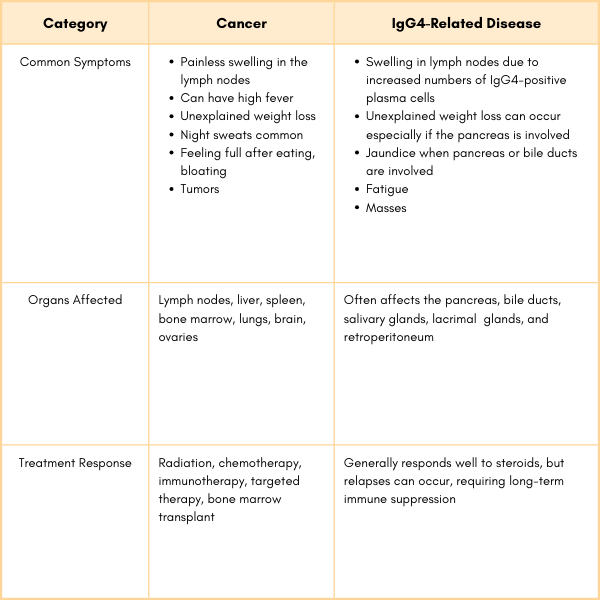

Getting the Right Diagnosis
Being misdiagnosed with cancer when you actually have IgG4-related disease (IgG4-RD) can lead to unnecessary surgeries and the wrong treatments. The right diagnosis means the right care — sooner, important because six out of 10 patients with IgG4-RD may have irreversible organ damage by the time they’ve secured a diagnosis. Asking the right questions and seeing the right doctors can make all the difference—just like it did for Kim.
After getting the right tests and finding a doctor familiar with IgG4-RD, Kim started receiving regular rituximab infusions. Now, she has no new growths and is getting back to the life she loves. Here, she shares some tips for others searching for an IgG4 diagnosis.
- Get a second opinion. If something feels off or treatment isn’t working, another doctor may catch what was missed. Ask:
- Could my symptoms be IgG4-RD?
- Should we test for IgG4 antibody levels?
- Would a biopsy help confirm or rule out cancer?
- Ask for the right tests. Some conditions need specific tests to confirm. Don’t be afraid to ask:
- What tests can confirm or rule this out?
- Track your symptoms. Write down what you feel, when it started, and any patterns. This helps doctors see the full picture.
- Double-check your imaging and labs. Make sure your doctor gets the full scan images — not just the report — before your appointment. You may need to call the imaging center.
- See a specialist. Some doctors aren’t familiar with conditions like IgG4-RD. A specialist may recognize key signs that others miss.
- Seek support. Seek out support groups affiliated with reputable organizations, such as patient advocacy groups, research institutions, or national rare disease networks. Online communities, such as Facebook groups or dedicated nonprofit websites, can be helpful, but be cautious about medical misinformation.
Raising awareness about IgG4-RD is crucial because it can look like cancer but requires very different treatment. If your diagnosis doesn’t feel right, trust your instincts. Ask questions, push for more tests, and find a doctor who truly listens. The right care can change everything.
Learn More About IgG4-RD
Click here to get more information on IgG4-RD including a guide to getting diagnosed, managing symptoms, and treatment options.
This article was made possible with support from Amgen.
Baker MC, Cook C, Fu X, Perugino CA, Stone JH, Wallace ZS. The Positive Predictive Value of a Very High Serum IgG4 Concentration for the Diagnosis of IgG4-Related Disease. Journal of Rheumatology. 2023. DOI: https://doi.org/10.3899/jrheum.220423.
Baker, Matthew C, MD. Personal Interview. Division of Immunology and Rheumatology Clinical Chief and Assistant Professor of Medicine, Stanford University. February 3, 2025.
Interview with Kim Skelly, patient.
Sodavarapu S, et al. IgG4-Related Diseases-Continues to Be a Cancer Mimicker. Cureus. 2020 Jan 9;12(1):e6610. PMID: 32064191; PMCID: PMC7008728.doi: https://doi.org/10.7759/cureus.6610.
Wallace, Z., et al. Current and future advances in practice: IgG4-related disease, Rheumatology Advances in Practice, Volume 8, Issue 2, 2024, rkae020, https://doi.org/10.1093/rap/rkae020.
Zhou, W., et al. IgG4-Related Disease as Mimicker of Malignancy. SN Comprehensive Clinical Medicine. 2021. https://doi.org/10.1007/s42399-021-00957-6.



